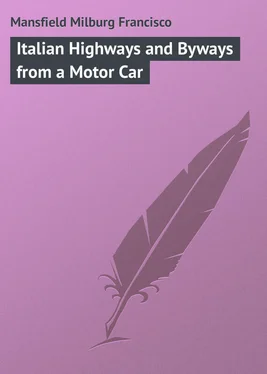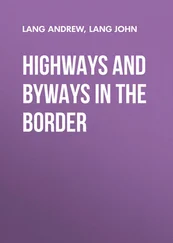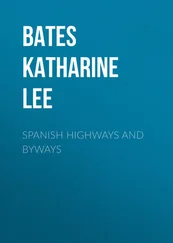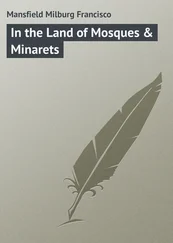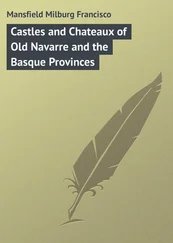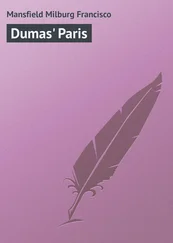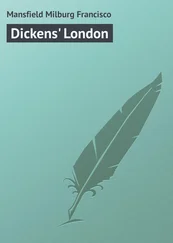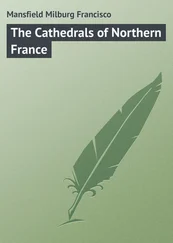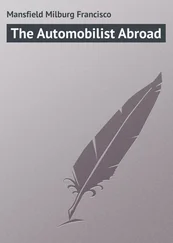Milburg Mansfield - Italian Highways and Byways from a Motor Car
Здесь есть возможность читать онлайн «Milburg Mansfield - Italian Highways and Byways from a Motor Car» — ознакомительный отрывок электронной книги совершенно бесплатно, а после прочтения отрывка купить полную версию. В некоторых случаях можно слушать аудио, скачать через торрент в формате fb2 и присутствует краткое содержание. Жанр: foreign_prose, Путешествия и география, на английском языке. Описание произведения, (предисловие) а так же отзывы посетителей доступны на портале библиотеки ЛибКат.
- Название:Italian Highways and Byways from a Motor Car
- Автор:
- Жанр:
- Год:неизвестен
- ISBN:нет данных
- Рейтинг книги:3 / 5. Голосов: 1
-
Избранное:Добавить в избранное
- Отзывы:
-
Ваша оценка:
- 60
- 1
- 2
- 3
- 4
- 5
Italian Highways and Byways from a Motor Car: краткое содержание, описание и аннотация
Предлагаем к чтению аннотацию, описание, краткое содержание или предисловие (зависит от того, что написал сам автор книги «Italian Highways and Byways from a Motor Car»). Если вы не нашли необходимую информацию о книге — напишите в комментариях, мы постараемся отыскать её.
Italian Highways and Byways from a Motor Car — читать онлайн ознакомительный отрывок
Ниже представлен текст книги, разбитый по страницам. Система сохранения места последней прочитанной страницы, позволяет с удобством читать онлайн бесплатно книгу «Italian Highways and Byways from a Motor Car», без необходимости каждый раз заново искать на чём Вы остановились. Поставьте закладку, и сможете в любой момент перейти на страницу, на которой закончили чтение.
Интервал:
Закладка:
The Italian waiter is usually a sunny, confiding person, something after the style of the negro, and, like his dark-skinned brother, often incompetent beyond a certain point. You like him for what he is though, almost as good a thing in his line as the French garçon, in that he is obliging and a great deal better than the mutton-chopped, bewhiskered nonentity who shuffles about behind your chair in England with his expectant palm forever outstretched.
The Italian camerière , or waiter, takes a pride in his profession – as far as he knows it, and quite loses sight of its commercial possibilities in the technicalities of his craft, and his seeming desire only to please. Subito momento is his ever ready phrase, though often it seems as though he might have replied never .
Seated in some roadside or seashore trattoria one pounds on the bare table for the camerière , orders another “Torino,” pays his reckoning and is off again. Nothing extraordinarily amusing has happened the while, but the mere lolling about on a terrace of a café overlooking the lapping Mediterranean waves at one’s feet is one of the things that one comes to Italy for, and one is content for the nonce never to recur to palazzos, villas, cathedrals, or picture galleries. There have been too many travellers in past times – and they exist to-day – who do not seek to fill the gaps between a round of churches and art galleries, save to rush back to some palace hotel and eat the same kind of a dinner that they would in London, Paris or New York – a little worse cooked and served to be sure. It’s the country and its people that impress one most in a land not his own. Why do so many omit these “attractions?”
The buona mano is everywhere in evidence in Italy, but the Italian himself seems to understand how to handle the question better than strangers. The Italian guest at a hotel is fairly lavish with the quantity of his tips, but each is minute, and for a small service he pays a small fee. We who like to impress the waiter – for we all do, though we fancy we don’t – will often pay as much to a waiter for bringing us a drink as the price of the drink. Not so the Italian; and that’s the difference.
Ten per cent, on the bill at a hotel is always a lavish fee, and five would be ample, though now and again the head waiter may look askance at his share. Follow the Italian’s own system then, give everybody who serves you something, however little, and give to those only, and then their little jealousies between each other will take the odium off you – if you really care what a waiter thinks about you anyway, which of course you shouldn’t.
These little disbursements are everywhere present in Italy. One pays a franc to enter a museum, a picture gallery or a great library, and one tips his cabman as he does elsewhere, and a dozen francs spent in riding about on Venetian gondolas for a day incurs the implied liability for another two francs as well.
CHAPTER IV
ITALIAN ROADS AND ROUTES
THE cordiality of the Italian for the stranger within his gates is undeniable, but the automobilist would appreciate this more if the Latin would keep his great highways (a tradition left by the Romans of old, the finest road-builders the world has ever known) in better condition.
Italy, next to France, is an ideal touring ground for the automobilist. The Italian population everywhere seems to understand the tourist and his general wants and, above all, his motive for coming thither, and whether one journeys by the railway, by automobile or by the more humble bicycle, he finds a genial reception everywhere, though coupled with it is always an abounding curiosity which is at times annoying. The native is lenient with you and painstaking to the extreme if you do not speak his language, and will struggle with lean scraps of English, French and German in his effort to understand your wants.
Admirably surveyed and usually very well graded, some of the most important of the north and south thoroughfares in Italy have been lately so sadly neglected that the briefest spell of bad weather makes them all but impassable.
There is one stretch between Bologna and Imola of thirty-two kilometres, straightaway and perfectly flat. It is a good road or a bad road, according as one sees it after six weeks of good weather or after a ten days’ rainy spell. It is at once the best and worst of its kind, but it is badly kept up and for that reason may be taken as a representative Italian road. The mountain roads up back of the lake region and over the Alpine passes, in time of snow and ice and rain – if they are not actually buried under – are thoroughly good roads. They are built on different lines. Road-building is a national affair in Italy as it is in France, but the central power does not ramify its forces in all directions as it does across the border. There is only one kind of road-building worth taking into consideration, and that is national road-building. It is not enough that Massachusetts should build good roads and have them degenerate into mere wagon tracks when they get to the State border, or that the good roads of Middlesex should become mere sloughs as soon as they come within the domain of the London County Council. Italy is slack and incompetent with regard to her road-building, but England and America are considerably worse at the present writing.
Entering Italy by the Riviera gateway one leaves the good roads of France behind him at Menton and, between Grimaldi, where he passes the Italian dogana and its formalities, and Ventimiglia, or at least San Remo, twenty-five kilometres away, punctures his tires one, three or five times over a kilometre stretch of unrolled stone bristling with flints, whereas in France a side path would have been left on which the automobilist might pass comfortably.
It isn’t the Italian’s inability to handle the good roads question as successfully as the French; it is his woefully incompetent, careless, unthinking way of doing things. This is not saying that good roads do not exist in Italy. Far from it. But the good road in Italy suddenly descends into a bad road for a dozen kilometres and as abruptly becomes a good road again, and this without apparent reason. Lack of unity of purpose on the part of individual road-building bodies is what does it.
Road-building throughout Italy never rose to the height that it did in France. The Romans were great exploiters beyond the frontiers and often left things at home to shuffle along as best they might whilst their greatest energies were spent abroad.
One well defined Roman road of antiquity (aside from the tracings of the great trunk lines like the Appian or Æmilian Ways) is well known to all automobilists entering Naples via Posilippo. It runs through a tunnel, alongside a hooting, puffing tram and loose-wheeled iron-tired carts all in a deafening uproar.
This marvellous tunnelled road by the sea, with glimpses of daylight now and then, but mostly as dark as the cavern through which flowed the Styx, is the legitimate successor of an engineering work of the time of Augustus. In Nero’s reign, Seneca, the historian, wrote of it as a narrow, gloomy pass, and mediæval superstition claimed it as the work of necromancy, since the hand of man never could have achieved it. The foundation of the roadway is well authenticated by history however. In 1442 Alphonso I, the Spaniard, widened and heightened the gallery, and Don Pedro of Toledo a century later paved it with good solid blocks of granite which were renewed again by Charles III in 1754. Here is a good road that has endured for centuries. We should do as well to-day.
There are, of course, countless other short lengths of highway, coming down from historic times, left in Italy, but the Roman viae with which we have become familiar in the classical geographies and histories of our schooldays are now replaced by modern thoroughfares which, however, in many cases, follow, or frequently cut in on, the old itineraries. Of these old Roman Ways that most readily traced, and of the greatest possible interest to the automobilist who would do something a little different from what his fellows have done, is the Via Æmilia.
Читать дальшеИнтервал:
Закладка:
Похожие книги на «Italian Highways and Byways from a Motor Car»
Представляем Вашему вниманию похожие книги на «Italian Highways and Byways from a Motor Car» списком для выбора. Мы отобрали схожую по названию и смыслу литературу в надежде предоставить читателям больше вариантов отыскать новые, интересные, ещё непрочитанные произведения.
Обсуждение, отзывы о книге «Italian Highways and Byways from a Motor Car» и просто собственные мнения читателей. Оставьте ваши комментарии, напишите, что Вы думаете о произведении, его смысле или главных героях. Укажите что конкретно понравилось, а что нет, и почему Вы так считаете.
